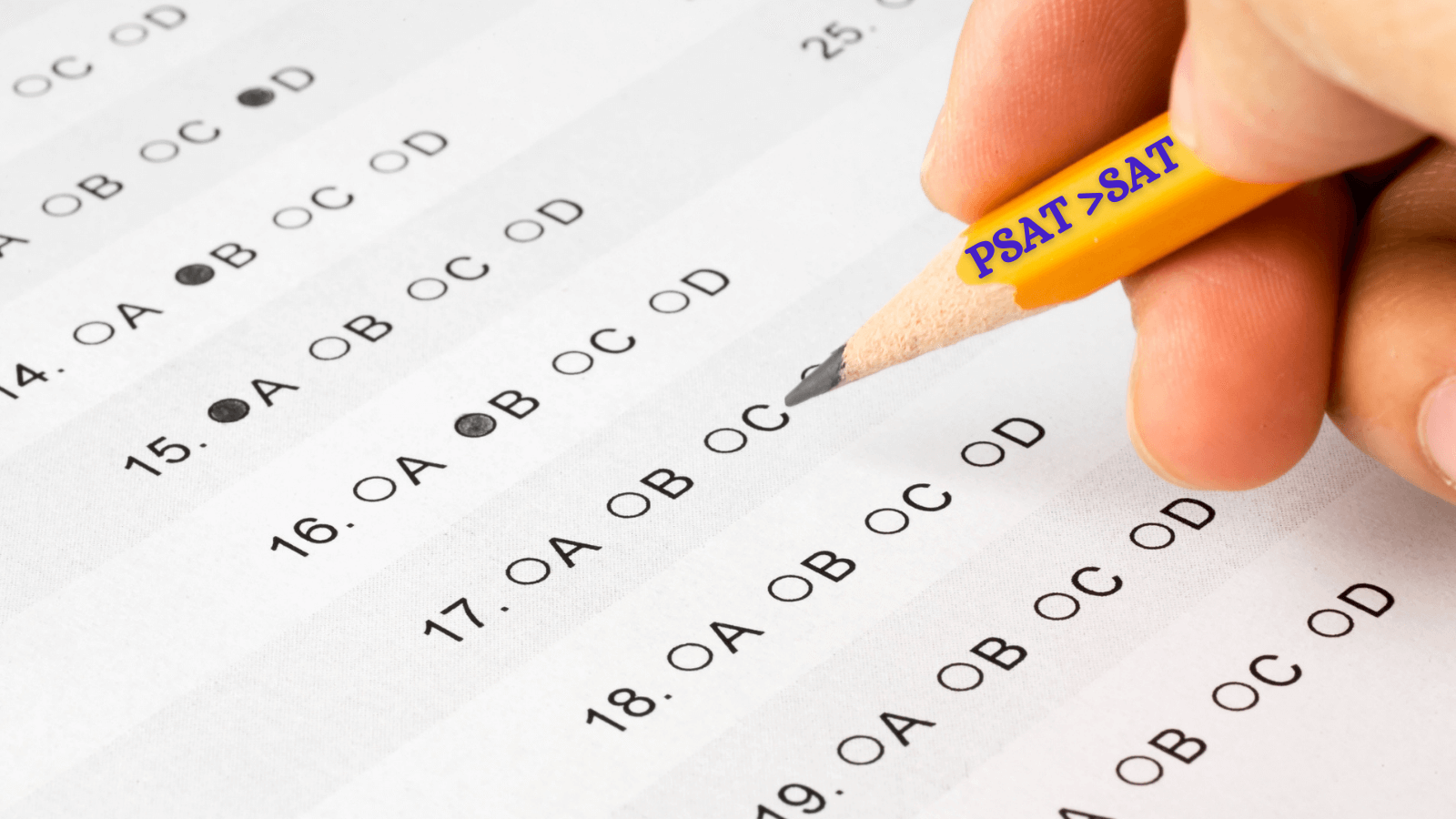Student-centric advice and objective recommendations
Higher education has never been more confusing or expensive. Our goal is to help you navigate the very big decisions related to higher ed with objective information and expert advice. Each piece of content on the site is original, based on extensive research, and reviewed by multiple editors, including a subject matter expert. This ensures that all of our content is up-to-date, useful, accurate, and thorough.
Our reviews and recommendations are based on extensive research, testing, and feedback. We may receive commission from links on our website, but that doesn’t affect our editors’ opinions. Our marketing partners don’t review, approve or endorse our editorial content. It’s accurate to the best of our knowledge when posted. You can find a complete list of our partners here.
What Is the PSAT?
 By
Sawyer Hiton
By
Sawyer Hiton 
Sawyer Hiton is a former scholarship and financial aid writer with Scholarships360. Previously, Sawyer worked with the nonprofit College Possible, supporting high school juniors in beginning their college plans and applications. Sawyer graduated from Kenyon College with a degree in Philosophy.
Full BioLearn about our editorial policies

Maria Geiger is Director of Content at Scholarships360. She is a former online educational technology instructor and adjunct writing instructor. In addition to education reform, Maria’s interests include viewpoint diversity, blended/flipped learning, digital communication, and integrating media/web tools into the curriculum to better facilitate student engagement. Maria earned both a B.A. and an M.A. in English Literature from Monmouth University, an M. Ed. in Education from Monmouth University, and a Virtual Online Teaching Certificate (VOLT) from the University of Pennsylvania.
Full BioLearn about our editorial policies

PSAT stands for “Preliminary Scholastic Aptitude Test.” The PSAT is a test most sophomores and some juniors take to prepare for the SAT, a larger college readiness exam. But it can be more than just practice. If you do well on the PSAT you become eligible to earn scholarships. Doing well on the PSAT can also strengthen your college applications.
A little more about the PSAT
You can only take the PSAT once a year. Many high schools require their sophomores to take the test. For juniors, it is optional, but if you do well on the test this year you could qualify to receive a National Merit Scholarship. If you’re good at standardized tests, or just want some more SAT practice, it’s a great idea to take the PSAT your junior year.
Structure of the PSAT
The PSAT is 2 hours and 15 minutes long, and consists of a reading and writing section, as well as a math section. It recently switched to a digital format along with the SAT. Below is a breakdown of all the PSAT sections.
| Points | Time allotted | Questions | |
| Reading and writing | 160-760 | 64 minutes | 54 |
| Math | 160-760 | 70 minutes | 44 |
| Total | 320-1520 | 134 minutes | 98 |
Reading and writing
The reading section of the PSAT tests your ability to read a passage, glean relevant information, and answer questions regarding evidence, words in context, and general analysis. Even if reading isn’t your best subject, you can still find a home in PSAT reading. The section is composed of literature, history, social science, and science passages, so you’re likely to resonate with at least one of the topics!
The writing section tests your ability to locate and correct grammatical errors. You’ll also be asked to revise words and phrases to better the text. Much of what shows up here you’ll have learned in English classes, or just through your daily conversations.
Math
PSAT math is broken down into two sections, both involve multiple choice answers as well as write-in answers. Some questions are made up of two answers, where the first is used to discover the second.
How is the PSAT scored?
Each correct answer you get on the PSAT counts as one point towards your raw score. Points aren’t deducted if you get questions wrong, so use the process of elimination and guess away! Your raw score is converted to your scaled score and your composite score is the combination of each section’s scaled score. Composite scores range from 320-1520. On top of receiving your PSAT composite score, you’ll also receive:
- How you did in each section, as well as categories within those sections
- Your percentile ranks, which show how you did compared to other test takers
- College readiness benchmarks, which show you if you are or are not on track for college
Learn what you need to work on for your SAT
Perhaps more importantly than college readiness, your PSAT score report will reveal to you what you need to work on for your SAT. You’ll be able to access an online PSAT report in which you can see how you did on each question. This can be an incredibly helpful guide as you set forth to prepare for the SAT (or ACT)!
Read more: PSAT to SAT score conversion
What score do you need to qualify for the National Merit Scholarship?
The short answer is, a high one. PSAT scores are automatically sent to the National Merit Scholarship, where a select number of testers from each state are “semifinalists”. These end up being less than 1% of high school students, or in other words, the 99th percentile. Semifinalists then need to go through certain steps to apply for the actual scholarship. These include writing an essay, submitting an excellent transcript, and taking the SAT or ACT and receiving equally high scores. It isn’t easy to become a National Merit Scholar, but this scholarship is special because it’s one of the few you automatically qualify for!
Related: What is a high SAT Score?
What’s next in your PSAT journey?
Most high schools offer the PSAT in October. Talk to your counselor to learn the specific dates of your school. Sophomores are automatically signed up. If you want to take the test as a junior, you’ll have to sign yourself up. Your counselor will support you in doing this.
The PSAT can be a great opportunity to practice your standardized testing and receive detailed feedback. You might just qualify for a bundle of scholarship money in the process. Either way, it is nothing to fear, and everything to be eager for during this next phase of your college preparation!
Preparing for the SAT
Once you’ve taken the PSAT, you’ll have taken a great step towards preparing for the “real thing” – the SAT. You can use your PSAT results to fine-tune your studying and ensure that you are as prepared as possible. Examine the areas that you did well in and the areas where you have room for improvement. This will help you to discover how to improve!
Frequently asked questions about the PSAT
What does the PSAT test do?
Can I take the PSAT online?
Do colleges look at the PSAT?
Does the PSAT have an essay?




 SAT" printed on his pencil">
SAT" printed on his pencil">
